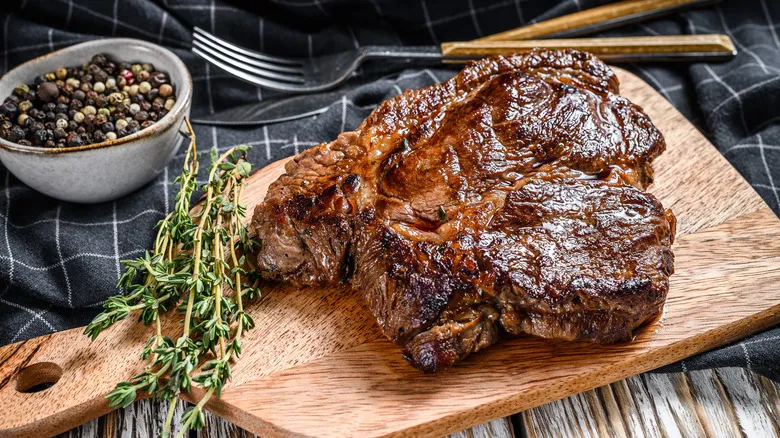Not sautéing the aromatics
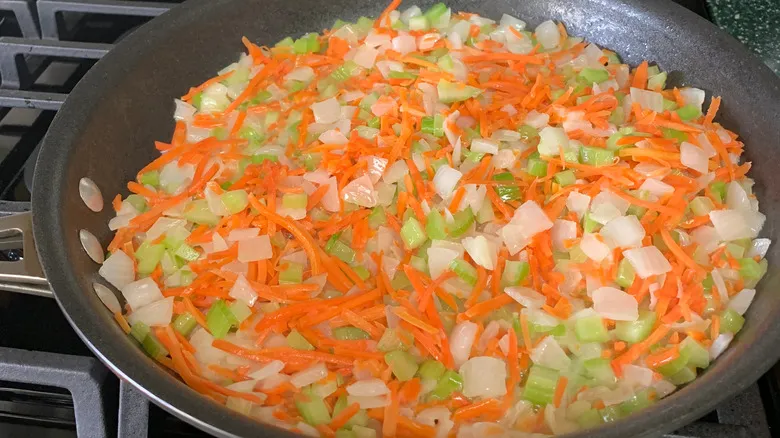
When you're in a rush to prepare a pot of soup, you might consider skipping the step of lightly browning the onions and other aromatics, often referred to as "sweating." However, doing so can lead to a soup that lacks rich flavor. Sylvia Fountaine emphasizes the importance of dedicating a few minutes at the start to enhance the taste. "Begin by sautéing aromatics like onions, shallots, or garlic until they turn golden and caramelized," she advises. "You can also introduce spices at this point to allow their flavors to develop before adding any liquid."
There is a significant difference in taste between raw and browned onions, so it's essential to think about the flavor profile you want to achieve in your soup. Scott Groth concurs that prioritizing the sautéing of vegetables early on is key, as it intensifies the flavor. Properly cooking the base means allowing them to brown for more than just a few seconds.
Maggie Turansky suggests cooking the aromatics for a minimum of 10 minutes before incorporating any liquids. "You want to reach a point where everything starts to brown, caramelize, and sticky browned bits, known as fond, begin to form at the bottom of the pan," she explains. If you're accustomed to frying the onions for just a minute or two, try extending the cooking time for your next soup batch and notice the difference it can make. "Investing the extra time to properly cook the mirepoix can elevate a good soup to an excellent one," Turansky affirms.
Skimping on the fat
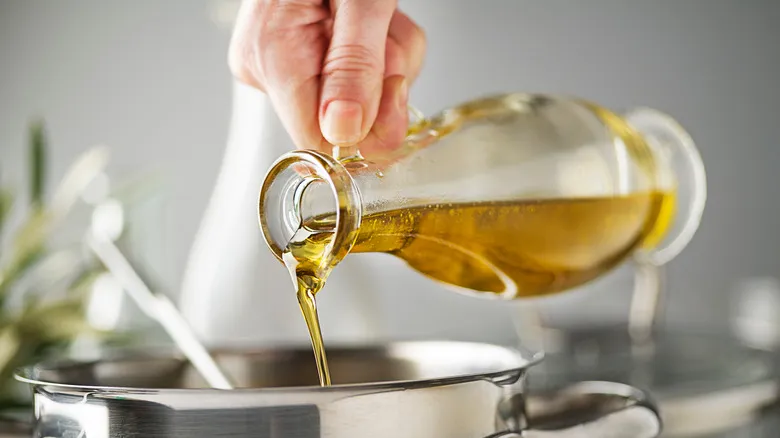
In addition to recognizing the significance of properly cooking aromatics, it's essential to consider the type of fat used in the process. In today's low-fat culture, many home cooks overlook the richness of flavor that fat can bring to their soups. "Using fat to sauté these ingredients adds a deeper layer of flavor to the soup," says Albert Nguyen. "When cooking ingredients like garlic, onion, ginger, and spices, the fat serves as a medium to carry those flavors."
Cutting back on fat at the beginning of cooking can compromise the overall taste of the soup, as there won't be sufficient flavor to infuse during the cooking process. "Many flavor compounds dissolve into the fat, creating a seasoning that integrates into your soup, either through emulsion or by allowing a bit to be present in each spoonful," Nguyen explains. "To address this, ensure you use enough fat to form a thin layer at the bottom of the pot." While butter and olive oil are common choices, alternatives like coconut oil can also be effective, particularly when the soup features a variety of root vegetables.
Neglecting the stock
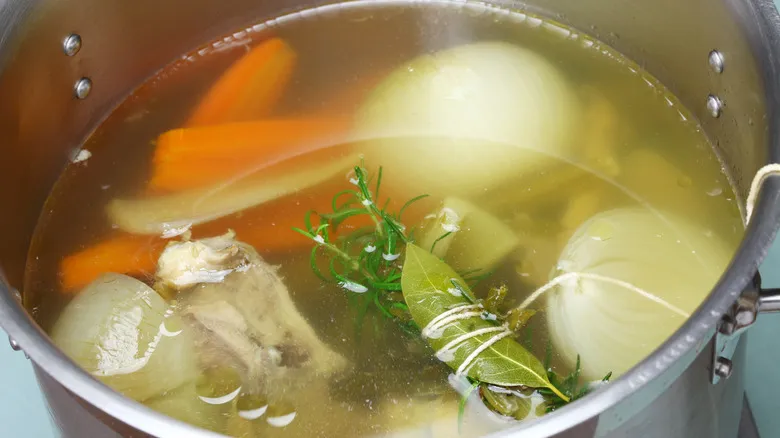
While you might view stock as just the liquid that fills your soup, it is actually an essential element that warrants your focus and effort. Sylvia Fountaine refers to it as the "foundation" of the soup and encourages making your own whenever possible. She recommends saving food scraps—such as vegetables, bones, or leftover meat—in a container in the freezer until you're ready to prepare a broth. "Once you have enough, simply combine everything in a pot with water, herbs, and spices, and you'll create a homemade stock that enhances the flavor far beyond anything you can buy at the store," she suggests.
Scott Groth points out that one of the most common errors home cooks make is using water as the base for their soup instead of seizing the chance to use stock or broth. "Using homemade or even store-bought stock or broth adds depth, richness, and complexity to the soup," he notes. Adding water to any dish dilutes the flavors, and this is true for soup as well. Consider investing in high-quality stock from your butcher or grocery store, or try making it yourself—we can provide a useful tip for the ideal liquid-to-meat ratio for perfect chicken stock.
Not layering flavors
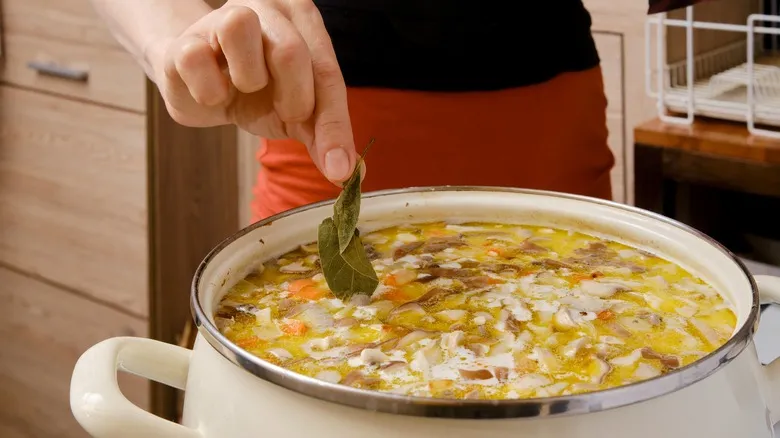
After you've set the foundation for your soup with well-sautéed aromatics and a rich, flavorful broth, it's crucial to keep building on those flavors as you continue cooking. Albert Nguyen points out that while the initial phase starts with browning the mirepoix, the pursuit of flavor doesn't end there. "Many people overlook the importance of seasoning ingredients as they incorporate them into the soup, opting to season only at the end. This oversight can lead to a broth that tastes either overly seasoned or salty, since the salt was added at the last moment," he notes. Whenever you introduce a new ingredient to your pot, be sure to include the right seasoning, whether it's salt, pepper, or herbs.
Scott Groth concurs and emphasizes the importance of seasoning at every stage of the cooking process, rather than waiting until the end. "If salt isn't added at various points—like when sautéing aromatics, incorporating bulk ingredients that absorb salt (such as cauliflower, potatoes, broccoli, etc.), and then making final adjustments just before serving—the soup can end up tasting flat or dull," he explains. The secret to achieving a perfectly seasoned soup lies not in the quantity of salt used, but in the timing of when you add your seasonings.
Failing to keep the soup simple

The purpose of preparing a pot of soup is to create a dish that is easy to make while offering a variety of flavors and health benefits. However, it’s easy to get caught up in making the soup elaborate. "Soups are simple, so don’t overthink the ingredients," suggests Steven Chiappetti. "Visit the market and choose your favorite seasonal produce to begin." Onions or leeks typically provide the best aromatic foundation, provided they are cooked properly. From there, you can concentrate on the main ingredient and enhance its taste.
"Minestrone soup is a classic example of a dish that many home cooks tend to overcomplicate," Chiappetti notes. With a rich and hearty soup like this, novice chefs often believe that adding more ingredients will yield a better result — but that’s not true. "Keep your focus on the main ingredient," Chiappetti emphasizes. "Everything else should serve as a complement." A perfect illustration is carrot soup, one of Chiappetti's favorites. Allow the carrots to shine, then enhance their sweetness with a hint of cumin or curry.
Adding too much liquid at the beginning
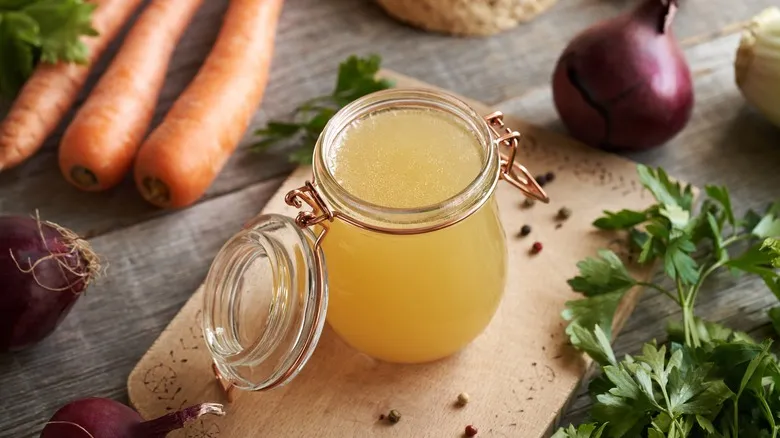
A crucial moment in the soup-making process occurs when you hover over the pot, stock in hand, contemplating whether to add more liquid. Often, we tend to pour in extra, which can lead to a soup that is watery and lacking in flavor by the time it’s finished. "People frequently add too much water or stock, resulting in an excessive liquid-to-solid ratio," notes Albert Nguyen. "It's better to begin with less liquid and create a richly flavored soup, which you can then dilute with a bit more liquid and additional seasoning." Starting with a smaller amount of stock allows you the flexibility to add more as needed.
Another aspect that many home cooks overlook is the moisture present in the vegetables themselves. "Many ingredients, like butternut squash and zucchini, have high water content and require very little additional liquid, stock, or broth," Nguyen explains. If you're uncertain, it's wise to start with less liquid than you think you need and adjust later to ensure your butternut squash soup turns out perfectly.
Overcooking the veggies

It might appear that preparing a tomato and herb vegetable soup requires minimal effort, with all the vegetables simply tossed into the pot to simmer. However, to achieve the best flavor, it's essential to cook them just right, which necessitates some planning during the prep stage. "It's all about timing and consistency," says Sylvia Fountaine. "Ensure your vegetables are cut to a similar size to promote even cooking." Root vegetables like carrots and potatoes take significantly longer to cook than more delicate vegetables like peas, so they should be added first to allow ample cooking time.
If you want to enhance the flavor profile of your soup, consider pre-cooking some of the vegetables. "Roasting vegetables such as carrots, tomatoes, or bell peppers before blending them into the soup can create a rich, caramelized flavor," Fountaine explains. However, if you're short on time, she points out that you can still achieve a delicious dish by taking a shortcut. "You can definitely throw raw vegetables directly into the pot for a quicker, hassle-free option that still tastes great," she says. By adding raw vegetables to your soup, you can have dinner ready in no time, provided you take a moment to chop them evenly beforehand.
Cooking too vigorously
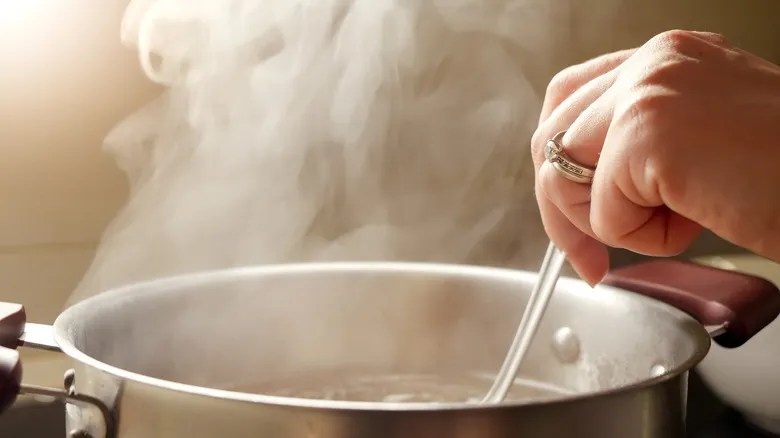
For home cooks, the distinction between boiling and simmering soup might seem minor, but it can significantly impact the final result. Scott Groth clarifies that while many believe soup must be boiled to properly cook its ingredients, a gentle simmer is often sufficient. "Boiling can cause delicate components like vegetables to become mushy or make diced chicken breasts tough," he notes. To preserve the quality of your soup's key ingredients, start by bringing the liquid to a boil, then reduce the heat to a lower setting.
Overcooking isn't the only drawback of a vigorous boil; it can also affect the visual appeal of your soup. Achieving a clear broth can be tricky, as aggressive boiling can lead to cloudiness. "Generally, unless you're preparing a cream-based soup like chowder or bisque, where boiling helps thicken the mixture, maintaining a simmer is the optimal approach," Groth advises. Simmering allows the flavors to meld without compromising the texture of the ingredients, ensuring your finished soup looks stunning.
Adding all the ingredients at once
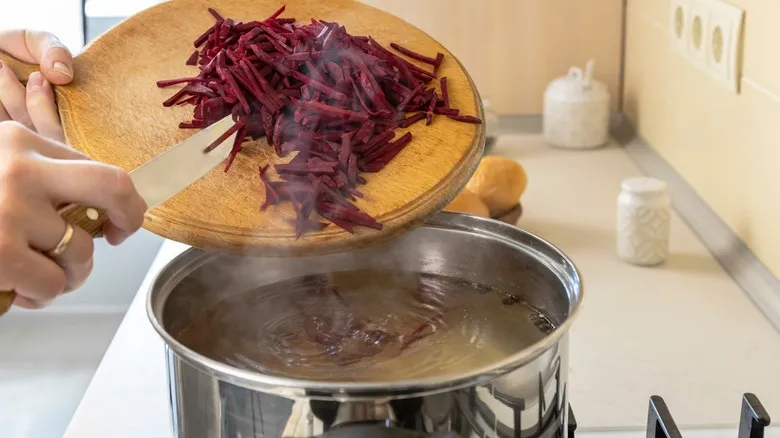
If your goal in making soup is to save time, it might be tempting to toss all the ingredients into the pot and crank up the heat. However, if you want your vegetables to be properly cooked and your final dish to be flavorful, it's important to consider the cooking times of each ingredient. As Scott Groth notes, "Spinach cooks in just a few minutes, while collard greens can take up to an hour to soften." To achieve the perfect cooking balance, think about how long each ingredient would take to cook on its own, and avoid adding ingredients with significantly different cooking times all at once.
Instead, organize your ingredients based on their cooking times. Start with the root vegetables and add the more delicate ones as they simmer. Remember that fresh herbs lose their flavor when cooked, so they should always be added at the end to preserve their aromatic qualities.
Adding too much dairy, and adding it too early
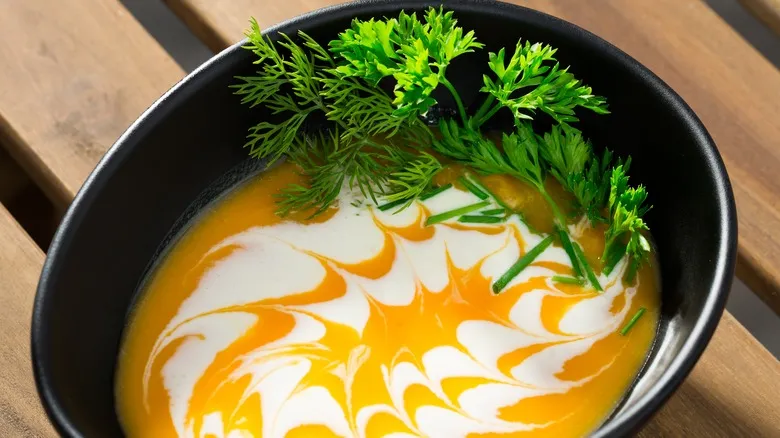
We are often lured by the idea of a rich, creamy soup, believing that its indulgence will elevate the dish into a luxurious light meal instead of just a basic soup. However, overdoing the cream can ruin your dish, so it's important to consider the right moment to incorporate dairy products. "I tend to favor dairy-free soups, but when I do include dairy — such as in a traditional tomato soup — a dash of heavy cream added at the very end can create a wonderfully smooth and luxurious texture," says Sylvia Fountaine. Cream is prone to curdling when heated, so adding it later minimizes the risk of separation.
Steven Chiappetti also emphasizes the importance of moderation when it comes to dairy, noting that a small amount can have a significant impact. He recommends that a creamy tomato soup should have a tomato-forward base with just a touch of cream mixed in. "This helps to balance the acidity that can arise from a robust tomato base," he explains. In many instances, you can achieve a creamy texture without any dairy by using thickening agents like potatoes to create a rich and satisfying consistency.
Not adjusting the acidity
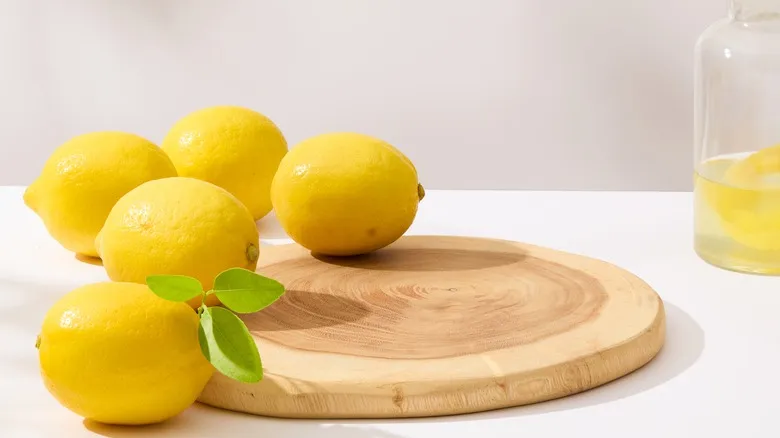
Achieving the right level of acidity can be a challenge for home cooks. While it might seem that acidity is undesirable in cooking, a lack of it can create an imbalance in a dish—especially in those with rich, earthy flavors, which is common in many soups. "Soups that taste heavy, flat, or somehow 'off' often lack sufficient acidity to cut through their richness or fat," explains Scott Groth.
As your soup simmers, be sure to taste it frequently to observe how the acidity evolves as the ingredients cook. If you sense that something is missing but can't quite pinpoint it, it likely needs a touch of acidity to enhance the flavor. "A squeeze of fresh lemon or lime juice, a few drops of balsamic vinegar, a splash of wine, or even fermented ingredients like sauerkraut juice or kimchi can help unify the flavors for a fresh, vibrant finish," Groth suggests. The key to achieving balance in your soup is to add a small amount of acid gradually, tasting as you go, until you find the perfect level. Remember, in cooking, you can always add more, but you can't remove flavoring once it's been added.
Not taking advantage of kitchen appliances
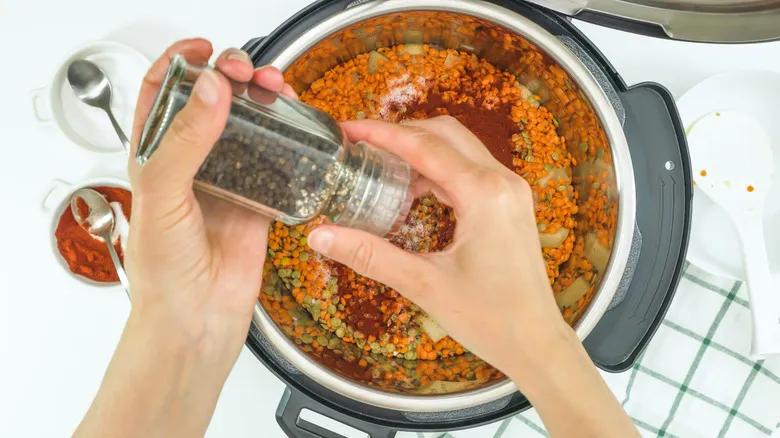
When you picture preparing a homemade soup, you might imagine yourself hovering over a large pot, stirring as the soup simmers and occasionally tasting it. While this traditional approach is certainly effective, there are many appliances available that can simplify the soup-making process, allowing you to focus on other tasks while your soup cooks.
"There are plenty of ways to create a delicious soup," says Sylvia Fountaine. "For bean soups, particularly when using dried beans, I really enjoy using the Instant Pot. It saves time and cooks the beans to perfection." If you own an Instant Pot, you can make the most of it the next time you whip up a soup, as the pressure it generates cooks vegetables much faster than the stovetop method. If you're not pressed for time, a slow cooker is also an excellent choice. Utilizing a slow cooker—or the slow-cook setting on the Instant Pot—lets the flavors meld together gradually without risking overcooking the ingredients. This way, you can start the soup in the morning before you head out and return to a beautifully cooked pot of steaming delight.
Over-seasoning the soup
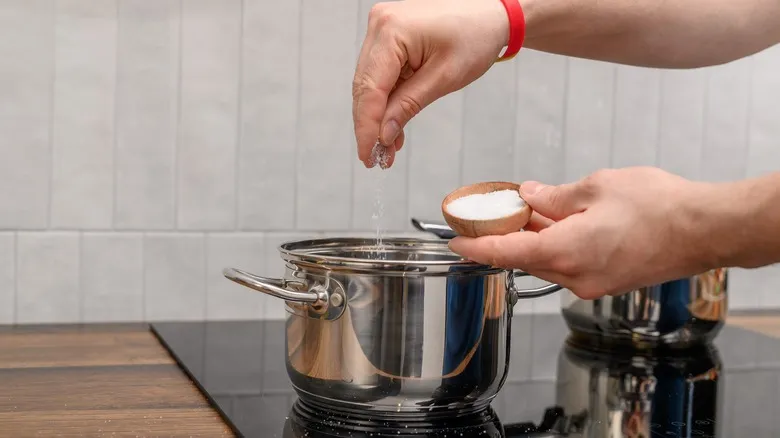
You've nearly completed the culinary masterpiece that is your pot of soup. You take a cautious sip, and... disaster strikes. It's too salty. Over-seasoning can occur for various reasons, such as using salty ingredients without adjusting the added salt accordingly. Once you realize the error, you'll need a quick solution to bring it back to its original perfection.
"You can always add more liquid to lessen the saltiness," advises Sylvia Fountaine. "For broth-based soups, incorporating ingredients like pasta, rice, or another grain can help absorb some of the excess salt and restore balance." The same principle applies to herbs and spices. While it may seem like you can never have too much of that delightful aromatic flavor, there is a threshold where the seasonings begin to dominate the dish. Especially with dried herbs and spices, a small amount can go a long way.
Not understanding how to thicken the soup
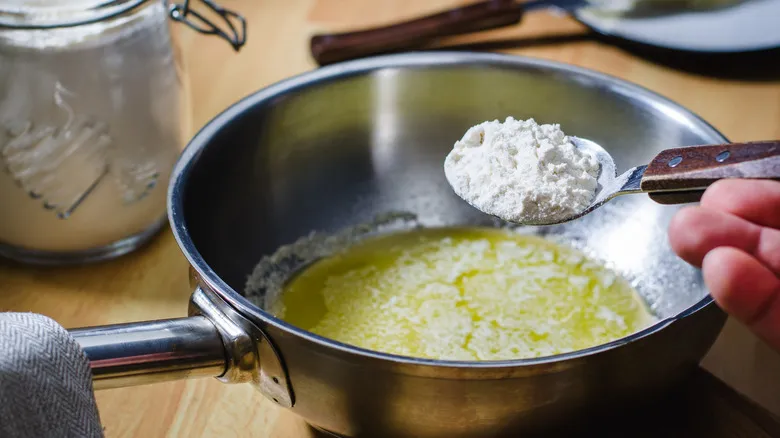
Unless you're deliberately preparing a light, broth-based soup, you're likely aiming for a creamy and satisfying final product. Achieving this can be challenging, and as we've discovered, simply adding more cream isn't the answer. Sylvia Fountaine recommends a technique for thickening the soup using only the ingredients you already have on hand. "By pureeing a portion of the cooked vegetables and mixing it back into the pot, you can naturally thicken the soup and create a creamy texture without any extra ingredients," she explains.
Another way to thicken the soup is by incorporating ingredients that will change its texture. "Potatoes or rice are the most common additions," says Steven Chiappetti. "Potatoes impart a more pronounced flavor, while rice offers a cleaner taste." If you don't have these ingredients available, your last resort is to use a traditional thickener. Arrowroot and cornstarch are two popular choices, but Chiappetti cautions that they should be used sparingly, as they can significantly impact both the flavor and texture of the dish.
Recommended
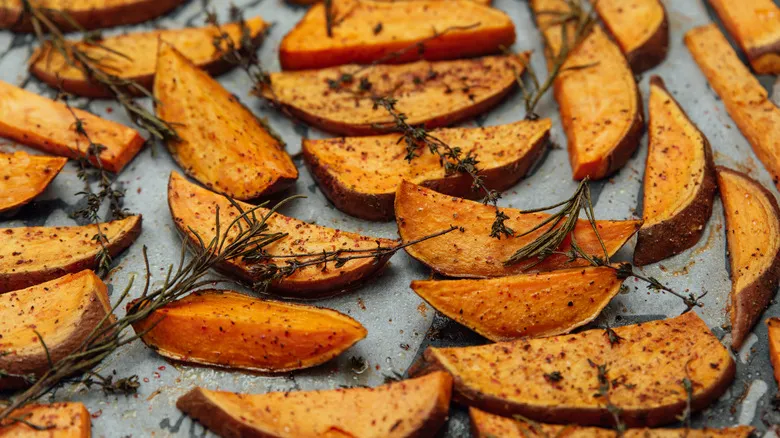
Roasted Sweet Potatoes Are What Your Vegetarian Sandwiches Have Been Missing

The Mistake That's Ruining Your Frozen Veggies
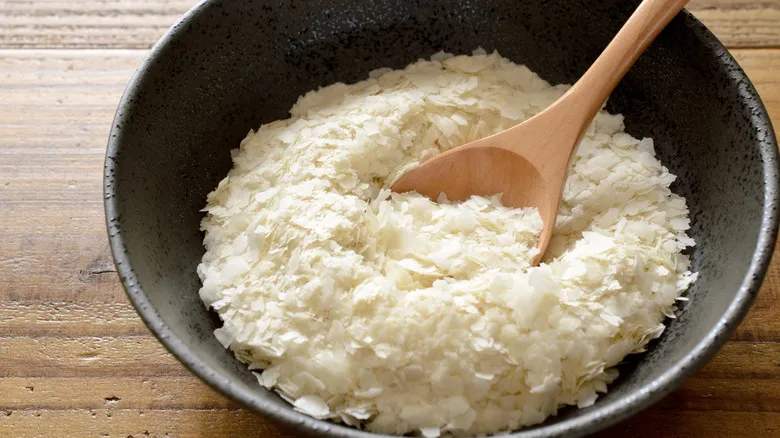
Turn Instant Mashed Potatoes Into The Best Chips With This Hack

The Secret Weapon To Spice Up Your Soup Is Already Sitting In Your Fridge
Next up



